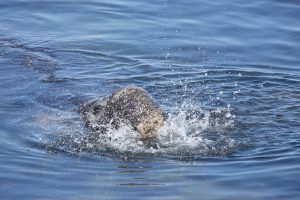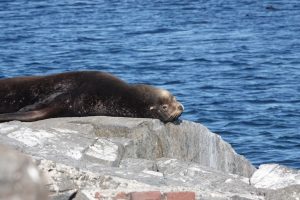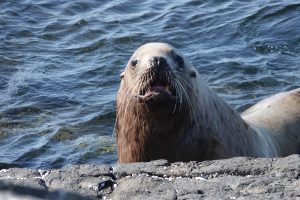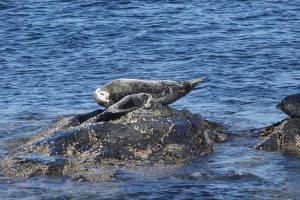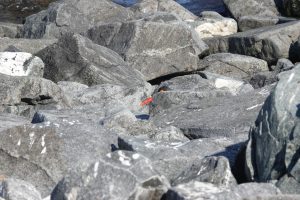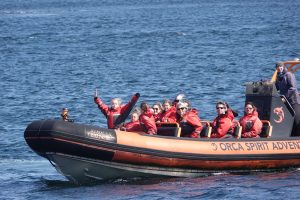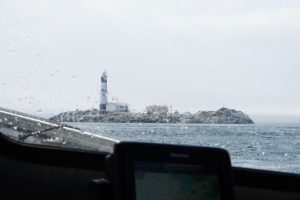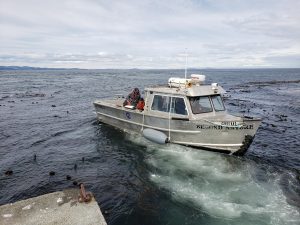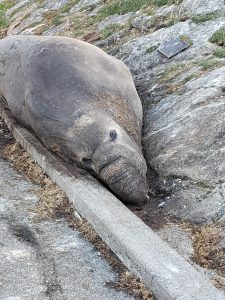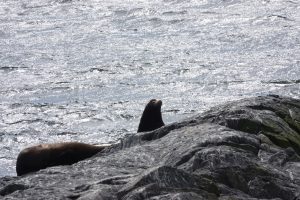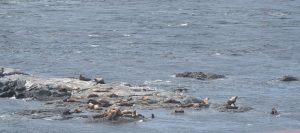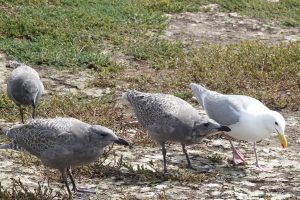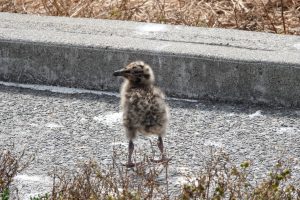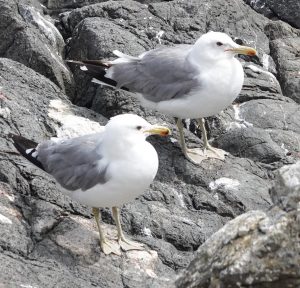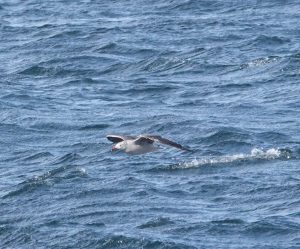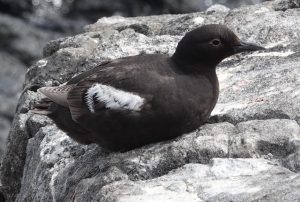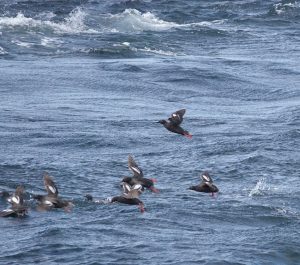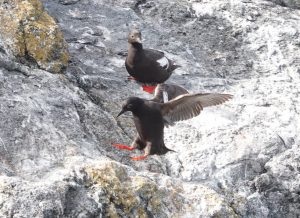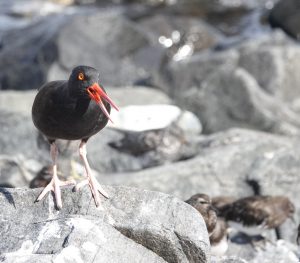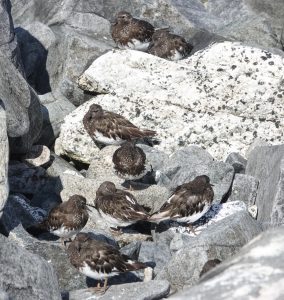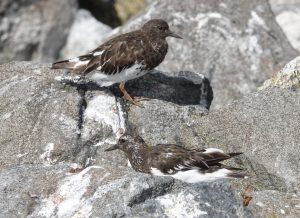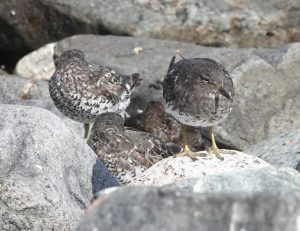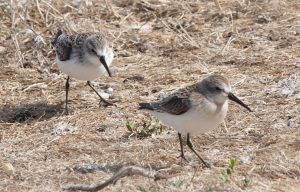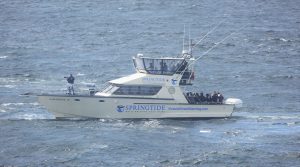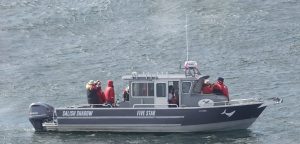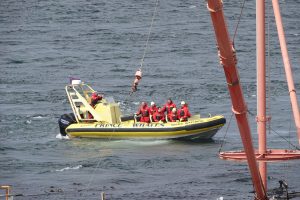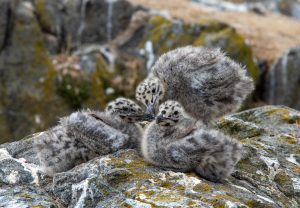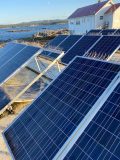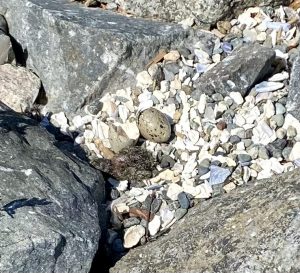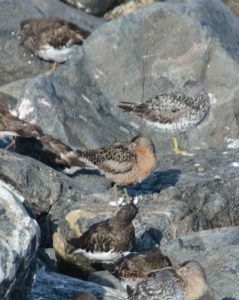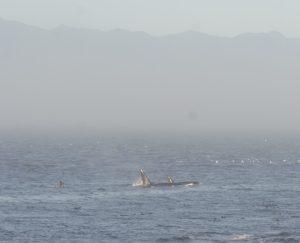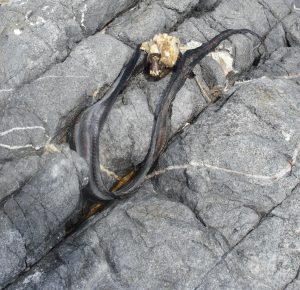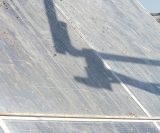Fog rolled in on Monday night, activating the signal from the beacon. It’s a piercing set of three tones every minute, and a sound that I am very familiar with from hearing it often while at Rocky Point. I had been warned to bring earplugs, which I did, but I didn’t need them.

Fog roll
I was actually welcoming the fog for several reasons. Recent Eco-guardian Joan Rosenberg shared a tip about cleaning the solar panels when they were still wet with fog. Great idea! That made things go much quicker. There were also some things I really needed to get to on the computer, but when the weather is good, I want to be out looking around. The panels got cleaned, but the fog cleared fairly early, so things that should be done are still waiting.
The fog clearing definitely made my planned census today possible. Here is my report:
Census
Mammals
Humpback Whale: 1
Elephant Seal: 1 male
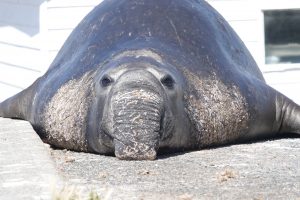
Returning from his daily swim.
Harbour Seal: 191 including several pups
Steller’s Sea Lion: 27
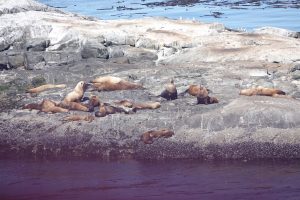
Steller’s and California Sea Lions
California Sea Lion 23
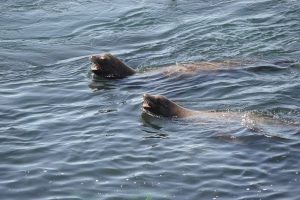
California Sea Lions
Birds
Black Oystercatcher: 8
Killdeer: 2
Black Turnstone: 21
Surfbird: 1
Rhinoceros Auklet: 5
Common Murre: 1
Heermann’s Gull: 1
California Gull: 700 (mostly early morning, although some lingered through the day)
Glaucous winged Gull: 655 (by clicker–highest count for me so far)
Pelagic Cormorant: 5
Double-crested Cormorant: 4
Bald Eagle: 1
Song Sparrow: 1
Brown-headed Cowbird: 1
Unidentified passerine: 1 (right as the sun set, the bird flew in east of the lighthouse, but I couldn’t relocate it. I’ll be checking the area in the morning!
Facility Work: Solar panels and windows cleaned. Greg came by with a load of diesel. Arriving California Sea Lions prompted check and minor fixes to the fencing. We also topped up all of the batteries with distilled water.
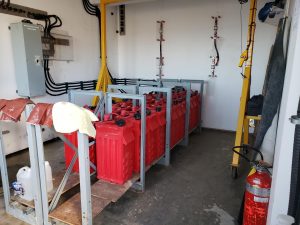
Battery bank. 24 needing juice!
Vessel Traffic: Ecotourism was big today with as many as five vessels in the reserve at once. Estimate more than 20 came through today. No private vessels noted.
Another beautiful sunset!
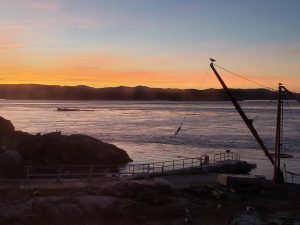
Sunset
Weather – Current: http://www.victoriaweather.ca/current.php?id=72
Weather – Past: http://www.victoriaweather.ca/station.php?

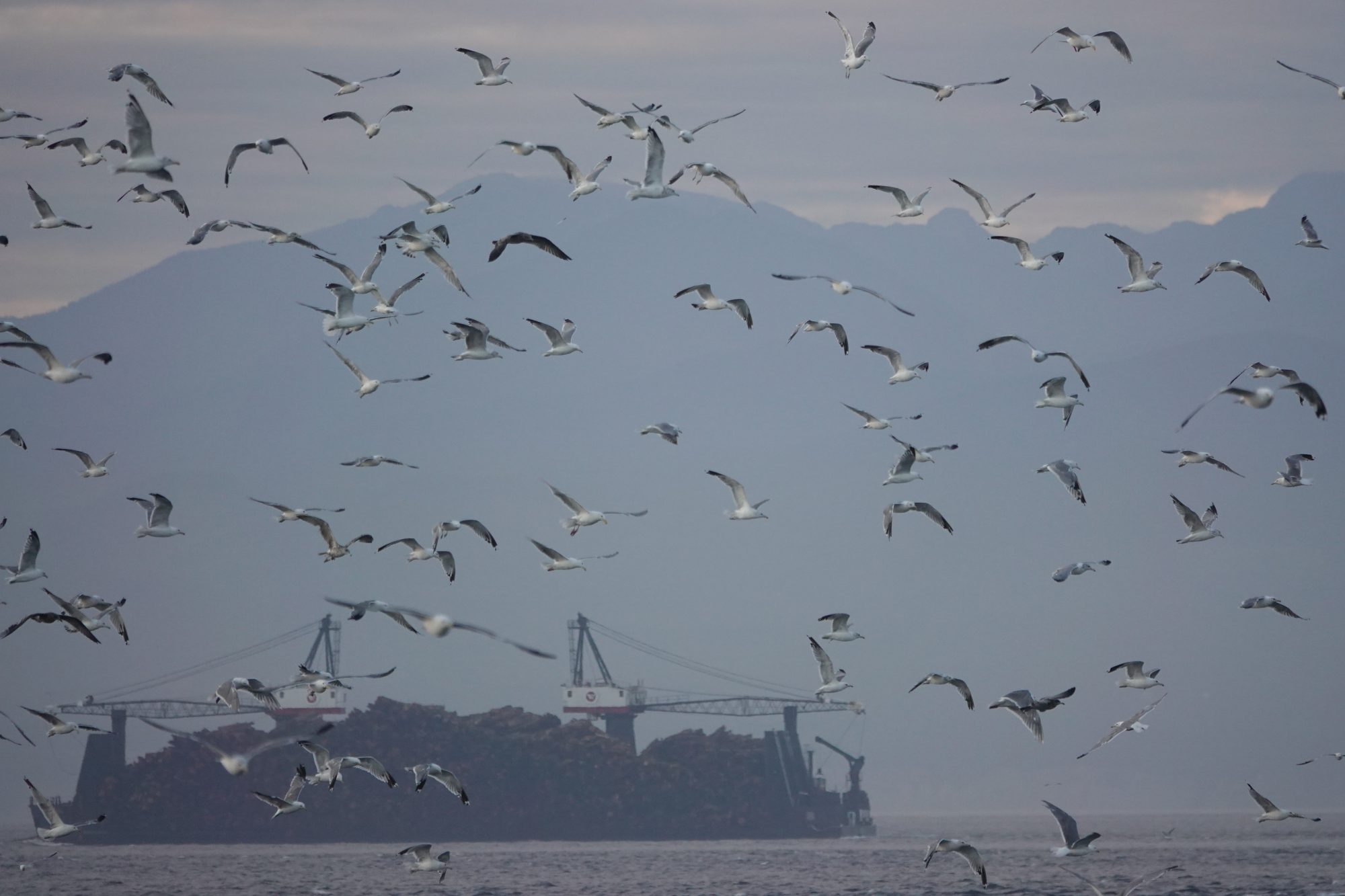
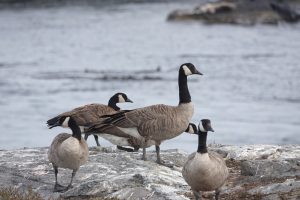
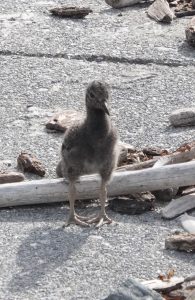
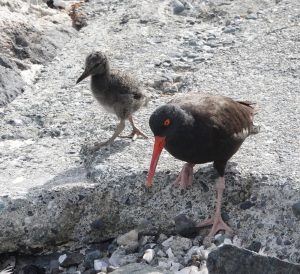
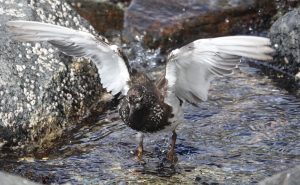
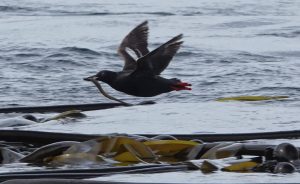
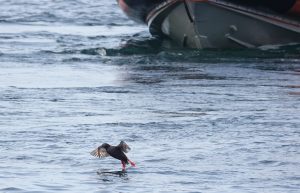
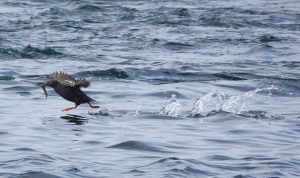
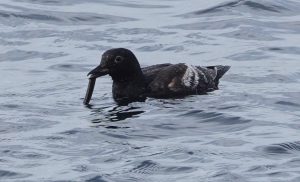
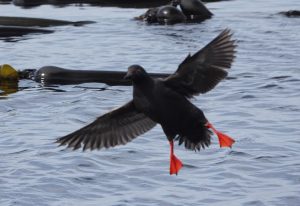
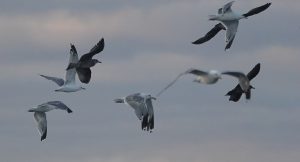

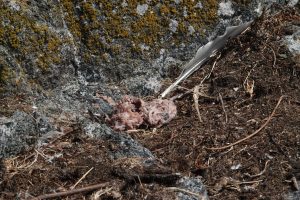
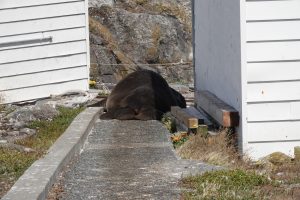
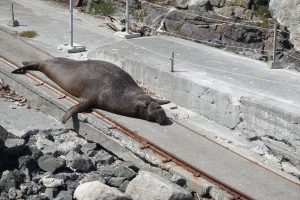
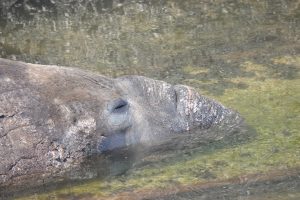 where he proceeded to stick his face in the water and blow bubbles. How exciting!! If you’d like to see some videos of this event, click
where he proceeded to stick his face in the water and blow bubbles. How exciting!! If you’d like to see some videos of this event, click 
